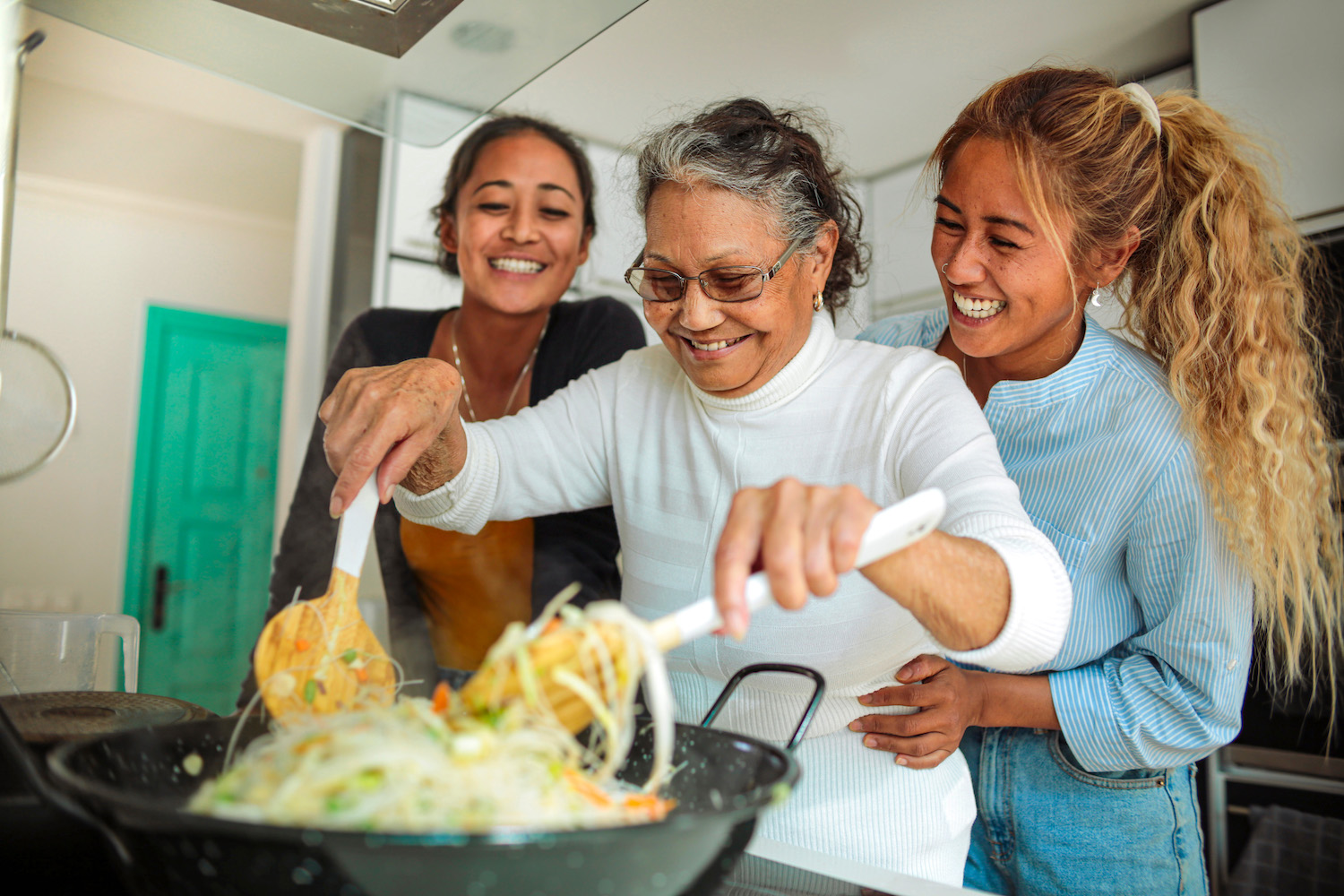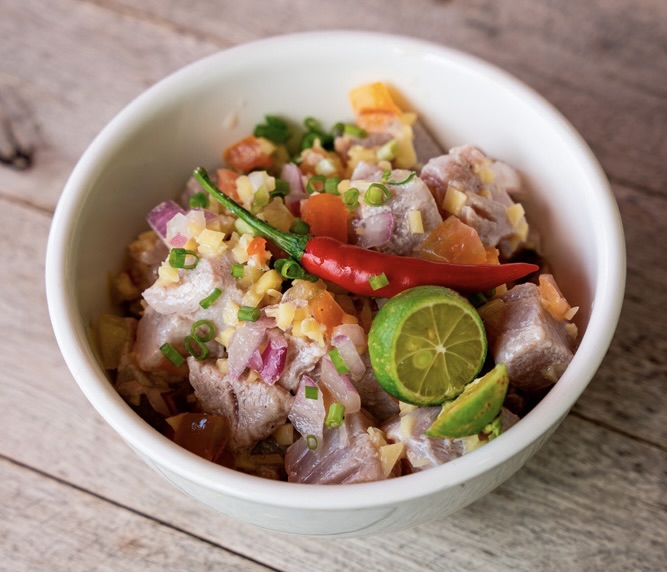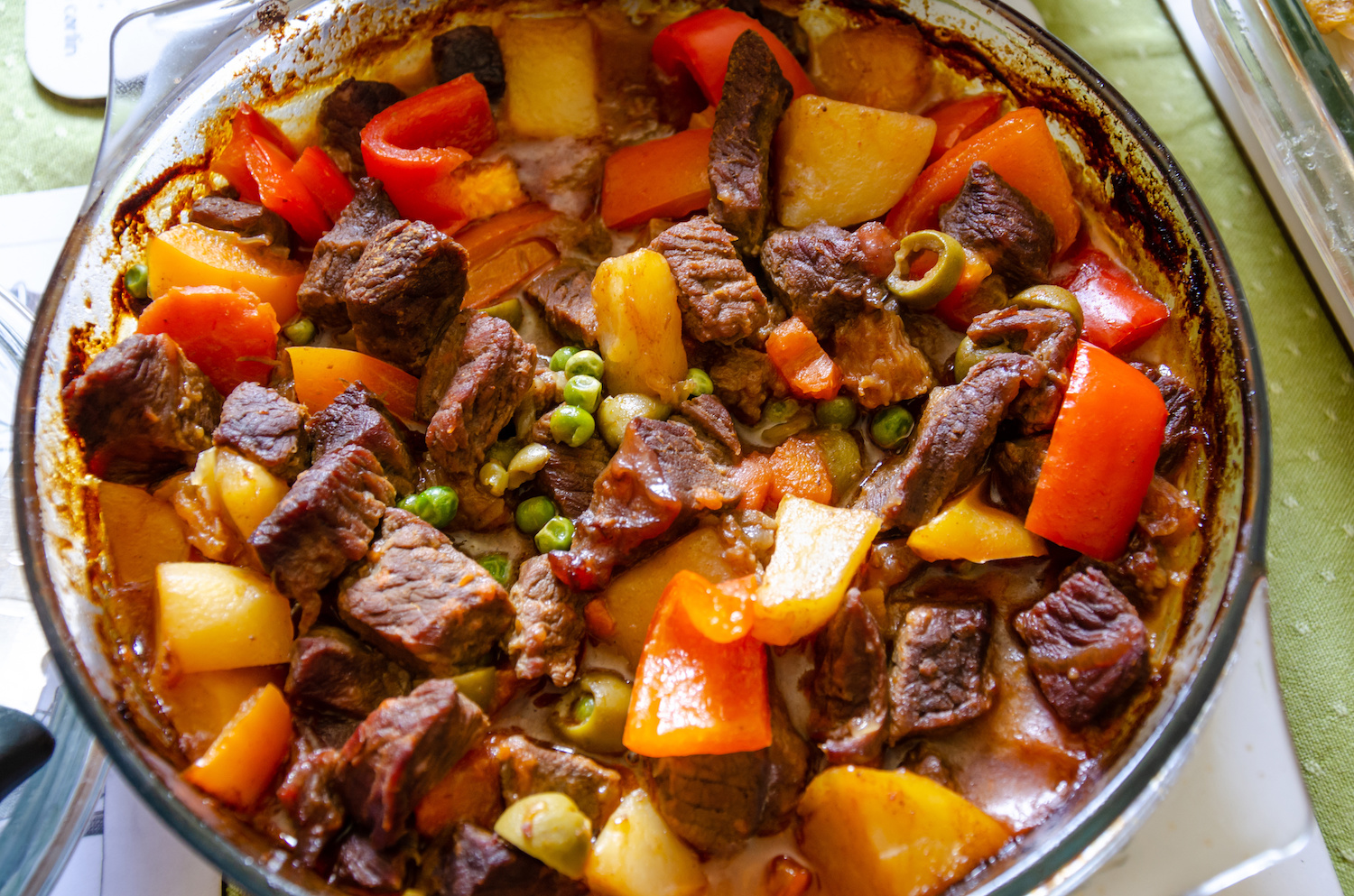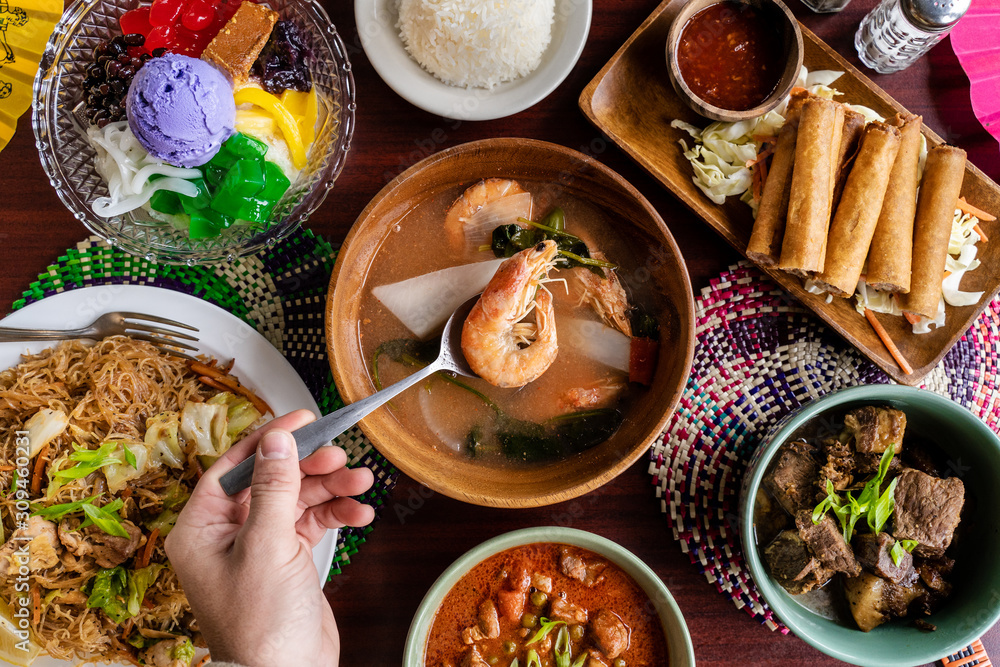Filipino Cooking Techniques
Cooking is a big part of Philippine culture and tradition. It’s not just a life skill, learned for survival, but an integral part of family life. From preparing daily meals to celebrating fiestas (feasts or festivals) with the whole town, cooking is a communal affair and a sacred family ritual.
Young adults in the family play an active role in the kitchen. Recipes are passed on from generation to generation, and each household or clan has its own secret recipes and secret ingredients used in their dishes making their food distinct. At an early age, children are equipped with simple culinary practices by making native fare such as puto (a native rice cake), halo–halo (an shaved ice dessert), or polvoron (crumbly shortbread made of powdered milk) in school. Filipino food is simple to cook and a pleasure to serve.
Philippine cuisine boasts layers of flavor with modest cooking methodologies. Antonio Pigafetta, a Venetian scholar, kept a detailed record of Spanish explorer Ferdinand Magellan and his crew’s journey to the spice islands on the Armada de Maluco. His journal, a treasure trove of Philippine pre-colonial information, reveals that 16th century Filipino and other peoples of Island Southeast Asia had developed culinary systems founded on a keen understanding of their natural surroundings (Felice Sta Maria. 2021). The earliest recorded cooking methods are boiling, roasting (over open fires), and steaming. In the Visayas region, the word sutukil (the namesake of a popular restaurant in Cebu) is a blend of three words pointing to the three early cooking methods: sugba (roasting over an open fire), kilaw (to eat raw – meat and seafood), and tuwa or tinuwa (to cook meat and vegetables with liquid) predating the arrival of the Spanish in Philippine shores (Louella Alix. 2021).
Fermentation was the primary method for food preservation. Meats like deer, goat, and carabao were tapa (a method of preserving meat via air drying or smoking over an open fire) while seafood — mostly fish and krill — were made into bagoong (brined with salt and fermented for several weeks). (Ambeth Ocampo. 2016). Stir-frying and soup-making were a product of trade relations and mingling with Asian neighbors. The Spanish introduced the art of sautéing, which became the building block of many Filipino dishes, as well as preparing stews and rice dishes cooked in a paellera (cast iron pan). Ingredients used were based on seasonality and what was available. Northern and central Luzon and a large portion of Mindanao, for example, are blessed with vast land for grazing and wildlife. The rest of the country, especially in the Visayas region and those along the shoreline, enjoy a bounty of fresh catch from the sea.
Proper cooking methods are essential for making authentic dishes.
Here are some of the traditional cooking methods known to the region.
Kinilaw
Kinilaw, or “eaten raw,” is one of the earliest known cooking methods and dishes native to the islands. It makes use of vinegar as a souring agent, as the acid cooks the raw fish and lends flavor. For this reason, it’s often likened to Hawaiian poke or Peruvian ceviche.
Today, home cooks and chefs alike pay homage to this early cooking method by presenting lavish plates of it. Fresh, seasonal ingredients are highlighted, the preparation involves the highest culinary skills, and it is gloriously garnished for aesthetics.
Another form of kinilaw is kilawin. In Northern Luzon, primarily where the up landers hunt wild animals and forage herbs, kilawin is prepared with meat. Meat is brined in vinegar to yield a juicy tenderness while instilling flavor. Unlike kinilaw, the meat is blanched or grilled in before it’s doused in vinegar.
The Comfort of Boiling
Boiling is the method of boiling meats, vegetables, and seafood in broth, and it also predates the Spanish arrival on the Philippine shores. In Pigafetta’s journal, it was shared that the native chieftains invited the Spanish voyagers ashore and they feasted on meat and fish either roasted or with water (called tinuwa) served on porcelain dishes (Felice Sta Maria. 2021).
The dish is the origin of local broth soups nilaga (beef broth soup with potato, beans, and cabbage) and tinola (chicken broth soup with green papaya and chili leaves or moringa) to name a few. Broth soups are the ultimate Filipino comfort food and are favored year-round. Nothing is more comforting than a bowl of piping hot nilaga on a gloomy rainy day. With the advancement of culinary science, the method of boiling is more of an actual simmer to avoid overcooking the meat. This step allows the meat to retain a perfect tenderness while releasing all of its gelatin. Adding vegetables at the end guarantees that the broth’s flavor from the soft and buttery meat is put to full use.
The Art of Stewing
The cooking method in this lineup that does not pre-date the arrival of the Spanish in the Philippines is stewing. Stewing is a lengthy cooking process that involves browning cut-up meat, sautéing garlic, onion, and spices, and adding the rest of the ingredients — including the liquid — to a pot. The dish is then brought to a boil and reduced to a simmer on low heat.
The Spanish shared various recipes and ingredients for stewing, including tomatoes, olives, olive oil, chickpeas, pimento, and peppers. To this day, Spanish stews are perhaps the most widespread in Philippine cuisine. These dishes are considered special, and reserved for feasts and celebrations. Notable dishes include callos (tripe in tomato stew chickpeas, chorizo, and bell peppers) cocido (meaning “to cook” various types of meat, sausages, and vegetables), menudo (stewed pork in tomato sauce with carrots and potato), pochero (stewed beef and vegetables in tomato sauce), and mechado (larded beef in soy and tomato sauce).
While Filipino dishes are classified as simple and easy to cook, dishes may be prepared differently. That is because each region in the archipelago has a different way of cooking, depending on the availability of ingredients or cooking preference known in the region. Whatever the technique or ingredients used may be, there is sure to be a thrilling combination of sweet, salty, and sour characteristics of Philippine cuisine in every bite.
Find Local Filipino Shefs & Meals
If you’re a lover of authentic Filipino food, made in the traditional Filipino way, order some home-cooked Filipino food from our local community of Shefs — every cook is food safety certified and earns a meaningful income selling their homemade dishes.
- Los Angeles
- San Francisco (Bay Area)
- Chicago
- New York City
- New Jersey
- Seattle
Find your local home-cooked Filipino food today!










